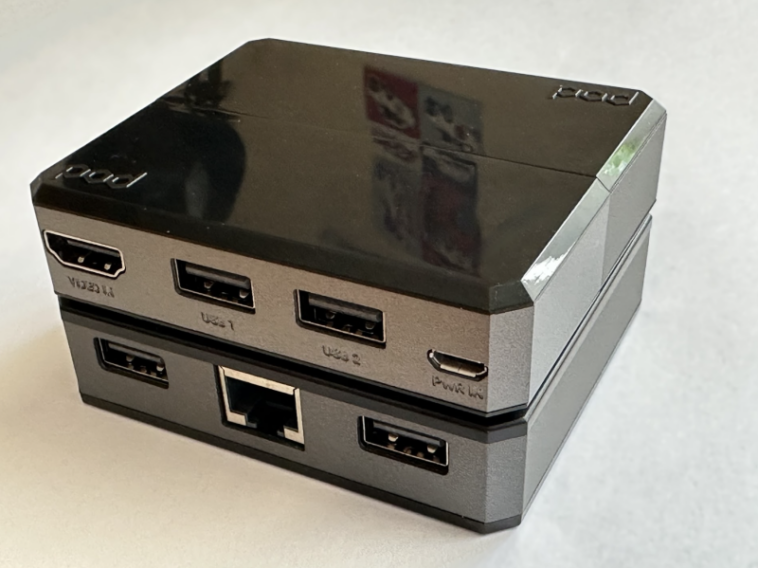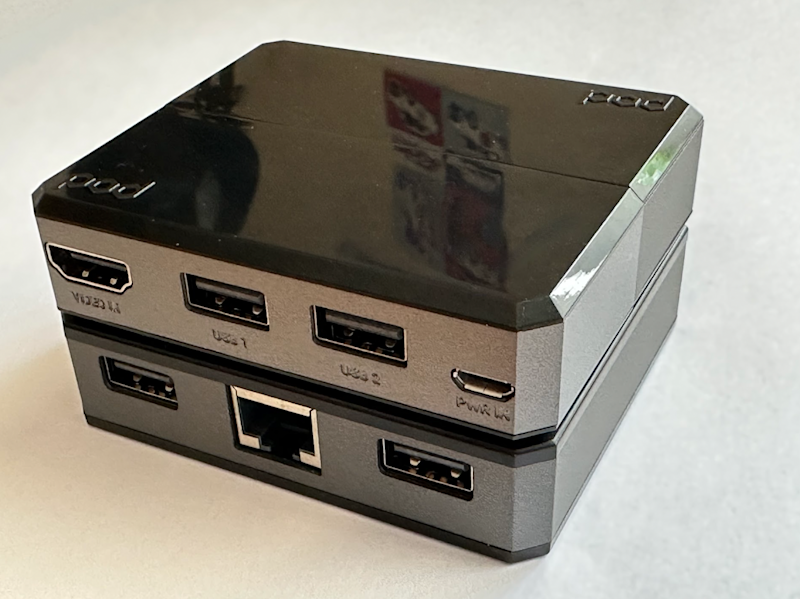The first add-on module, USB/HDMI (£12/$12), connects directly to mini-HDMI and micro-USB ports, breaking them out into full-sized equivalents and separating the power, freeing up another USB port. Installation is as simple as lining up the connectors and pushing together, with no drivers required. Underneath, a header and power connector are exposed that are used to connect other modules, so you may require this module for compatibility.
But wait, there’s more!
Need some more USB ports? How about Ethernet? The USB/LAN module (£20/$20) does both. A ‘full-size’ module, it sits below our current setup, connecting via an exposed header on the USB/HDMI module. Easily snapping together, you now get an additional four USB connectors (two on the front, two on the back) and an Ethernet connector for hard-wired networking. Again, a one-minute install and Raspberry Pi OS recognises all peripherals without any additional software.
Now it’s show-time. The Display Module (£30/$30) is a 2.8-inch capacitive touchscreen that plugs into Zero’s GPIO. Framed in an attractive black bezel, with four programmable buttons, it transforms Zero into a stand-alone unit opening up the potential for makes. Drivers are required to get the screen running, which we found easy to install. A simple configuration system allows the buttons to be preprogrammed with common functions such as power off or reboot. Provided documentation explains how to take control of them yourself using GPIO. The screen is perfectly adequate, although you’ll need a stylus for meaningful use of the touch capabilities.
All in all, this is a great collection of add-on gadgets for your Zero. The modular nature means you can keep costs (and size) down. Argon has also teased future modules for further expansion. One slight niggle was a lack of access to GPIO and camera connectors, although this can be overcome with USB devices. It would also be interesting if documentation was provided on how you could make your own modules using the through-module header.
Verdict
9/10
Easier GPIO and camera access would be nice, but the exquisite design, tough materials, and sensible pricing more than make up for that. The Argon POD has seriously impressed.
Specs
Case: Dimensions: 35 × 80 × 20 mm; SD card access; Removable cover
USB/HDMI Module: Dimensions: 35 × 80 × 20 mm; 2 × USB; 1 × full-size HDMI; 1 x micro-USB power
LAN Module: Dimensions: 70 × 80 × 20 mm; 4 × USB; 1 × Ethernet
LAN Module: Dimensions: 70 × 80 × 16 mm; 2.8˝ capacitive touchscreen; 4 × buttons; IR sensor




